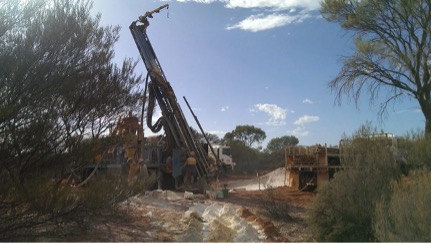Cannon Resources Limited (ASX: CNR) has obtained promising initial findings from its geophysical review being undertaken by Southern Geoscience Consultants (SGC) at the Collurabbie Project, located approximately 430km to the north northeast of Kalgoorlie in Western Australia.
Cannon’s exploration at Collurabbie is focused on a Ni-Cu-PGE system analogous to the Raglan deposits in Quebec, Canada.
The geophysical review was aimed at identifying new drill targets using the historical data from the Collurabbie Project area. A total of 55 targets were identified to focus future exploration efforts for both Ni-Cu-PGE and gold. The targets are based on interpreted presence of lithologies, structures, or sites of alteration defined by magnetic anomalism that may be more favourable to host mineralisation.
“Collurabbie is a highly prospective, underexplored nickel-copper-PGE sulphide project that shares geological similarities to the Raglan nickel camp in Quebec,” Cannon Director, Richard Bevan, said.
“We are pleased that the latest geophysical review has delivered a number of targets that have potential to add to the company’s nickel resource base.
“Collurabbie is demonstrating significant discovery potential, and given the company’s focus on its flagship Fisher East Project, we are currently investigating the potential for a JV partner to advance exploration.”
Collurabbie Project (Ni-Cu-PGE)
The Collurabbie Project is located in the northern part of the Gerry Well Greenstone Belt, which is situated in the Burtville Terrane of the Yilgarn Craton in Western Australia.
Historical geophysical data from the past 20 years was reprocessed using modern processing techniques to identify areas of potential interest that are prospective for Ni-Cu-PGE and gold exploration. SGC were provided with the available airborne magnetic, radiometric and gravity gradiometry data for the Collurabbie project area.
A lithostructural interpretation of bedrock geology was generated from airborne magnetic data. The interpretation was aided by processing and imaging of this data and was constrained by geological data derived from previous mapping and drilling across the region. The lithostructural interpretation formed the basis of target generation. Targets were based on interpreted presence of lithologies, structures, or sites of alteration defined by unusual magnetic anomalism that may be more favourable to host mineralisation. A total of 36 Ni-Cu-PGE targets and 19 gold targets were identified to focus future exploration efforts.
Several Ni-Cu-PGE and gold mineral occurrences are known both within and along strike of structures and lithologies present in the Collurabbie project area. The Olympia Prospect is the most significant known Ni-Cu-PGE occurrence in the project area where high grade massive Ni-Cu-PGE sulphide mineralisation was intersected in historical drilling, with a discovery intercept of 5.77m at 3.0% Ni, 1.9% Cu, 5.3g/t PGE.
Gold prospects include Windidda South 3, 4 and 5, and Naxos. Gold anomalism identified at these prospects shows an association with strong alteration zones and major through-going structures. Windidda South 3, 4 and 5 are located on or in close proximity to major and secondary northwest- trending through-going faults.
The lithological, structural setting and geophysical signature of known nickel and gold prosects within the region were reviewed and considered in developing a set of criteria for determining exploration targets. Targeting focussed on identifying anomalous geological features, or structures and lithologies that may be more favourable to host either nickel or gold mineralisation based on the set of criteria listed below.
Ni-Cu-PGE targets were identified based on:
• Zones of anomalously high magnetic intensity;
• Localised zones of increased magnetic intensity within continuous linear magnetic features; and
• Localised thickening of linear anomaly, or poddy-shaped anomalies with diffuse irregular
boundaries, particularly where proximal or along strike of known Ni-Cu-PGE prospects.
Gold targets were identified based on one or more of the following:
• Extension along strike of lithomagnetic units and/or structures known to host mineralisation;
• Lithomagnetic units exhibiting either increased or decreased magnetic intensity (suggesting alteration) in conjunction with intersecting or cross-cutting shear-zones, faults or fractures
• Flexure in major shear zone which may have been a possible dilation site for increased fluid flow;
• Zones of structural complexity (e.g., intersection of several faults) coupled with potential
presence of mafic-ultramafic rocks;
• Hinge zone of folds; and
• Zones of anomalously high or low magnetic response, or areas of unusual magnetic response with respect to the background response of that lithology.
Targets will be followed up with further work including aircore drilling, geochemistry and integration with additional ground or airborne geophysics. Nickel targets will be considered for electromagnetic surveying to screen for potential massive nickel sulphide mineralisation.
Next Steps
The geophysical review suggests significant exploration upside for Ni-Cu-PGE and gold mineralisation at Collurabbie.
Given the company’s focus on its flagship Fisher East Project, Cannon is seeking a JV partner to advance exploration.
For further information please visit: https://www.cannonres.com.au/












